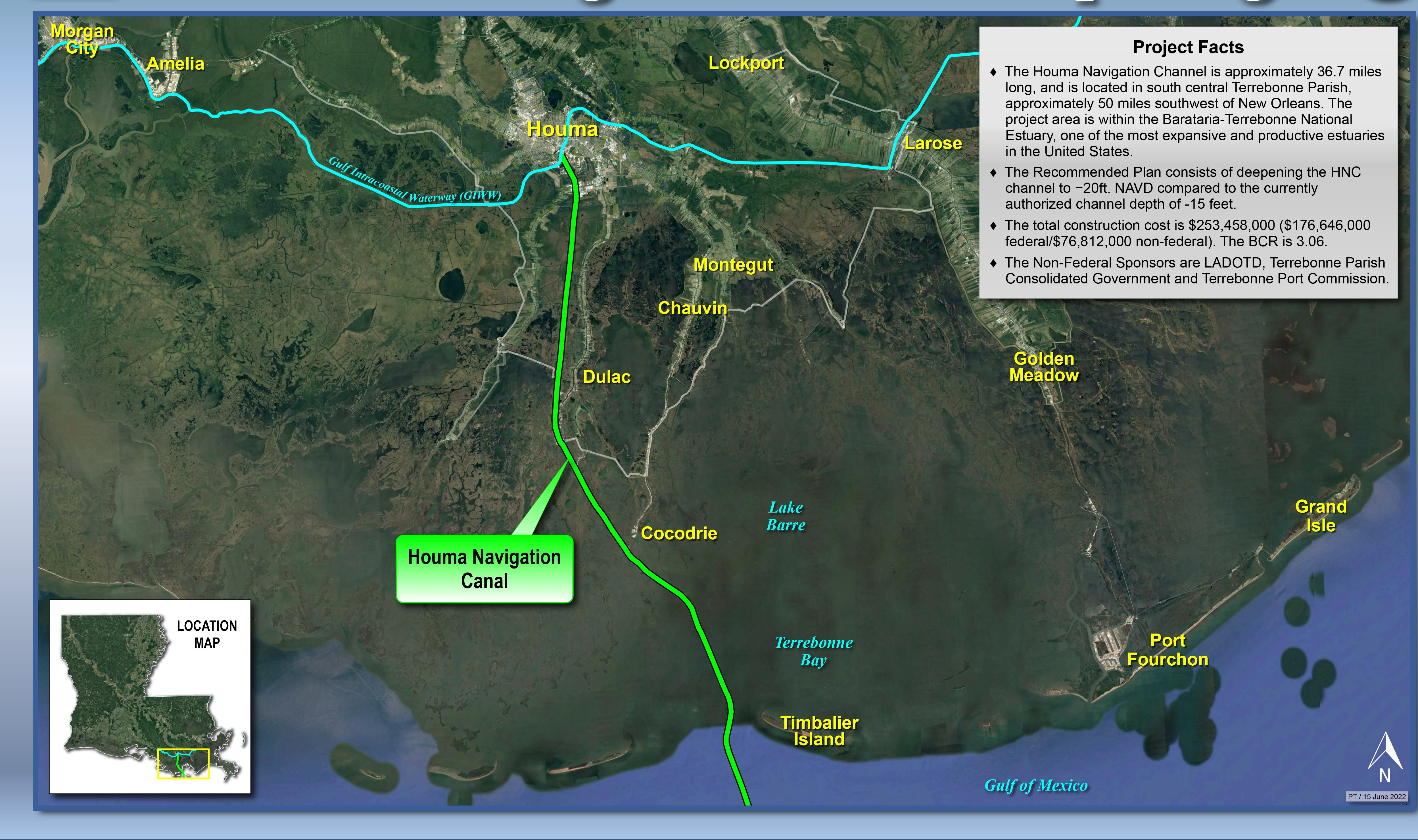The current channel depth causes marine interests to use less efficient methods to service the offshore oil and gas facilities located in the Gulf of Mexico.
Large vessels will not be able to pass through the channel efficiently. This will result in increased waterborne transportation costs.
Houma, Louisiana, is a large center for shipyard work for the offshore marine sector for the construction of new vessels and for regular repairs of licensed vessels. It also serves as a hub for service and supply for the offshore oil industry. With exploration activities occurring in deeper waters of the Gulf of Mexico, large vessels with more capacity are needed. As such, a deeper waterway is needed to reduce current waterborne transportation costs to allow the use of fully loaded larger vessels, as opposed to more trips with smaller vessels or light loaded large vessels. This would also allow for the efficient passage of large oil and gas sector barges, new vessels built or repaired at the Houma shipyards.
